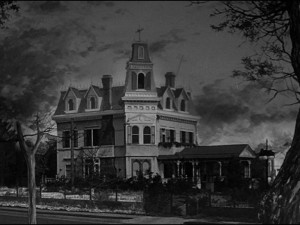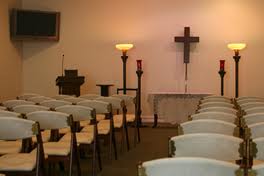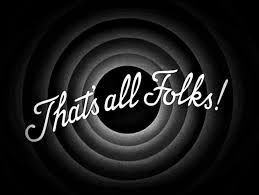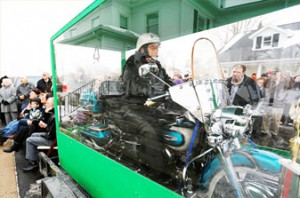Success in the funeral service business depends on the public’s trust and good feelings about those who work in this industry. However, the public’s perception of the funeral service industry–and of funerals in general–is changing dramatically, as indicated by an extensive 2012 public opinion study by Olson Zaltman Associates (OZA) at the request of the Funeral Services Foundation. Below is an outline of the studies findings. Cremation Solutions will follow up this post with how the funeral industry has responded along with some conclusions on changes the public would like to see.
The Methodology
 Funeral Foundation Study, which took place in the summer of 2012, interviewed more than a dozen individuals in Georgia and Kansas, with ages that range between 50 and 70, including those with a range of religious beliefs, of different races and ethnic backgrounds, and an equal number of men and women. They talked to each person between one and one-and-a-half hours.
Funeral Foundation Study, which took place in the summer of 2012, interviewed more than a dozen individuals in Georgia and Kansas, with ages that range between 50 and 70, including those with a range of religious beliefs, of different races and ethnic backgrounds, and an equal number of men and women. They talked to each person between one and one-and-a-half hours.
The Findings
![]() The OZA study, which sought to determine and elaborate on the public’s perception of funeral homes and end of life services, learned the following insights from their interviews:
The OZA study, which sought to determine and elaborate on the public’s perception of funeral homes and end of life services, learned the following insights from their interviews:
 1. The public views funeral homes as dark, confining and sometimes scary places. In the OZA study, respondents said things like funeral homes “are real formal and not really inviting, like art museums and galleries” and “they are sterile, cool and out of date.”
1. The public views funeral homes as dark, confining and sometimes scary places. In the OZA study, respondents said things like funeral homes “are real formal and not really inviting, like art museums and galleries” and “they are sterile, cool and out of date.”
2. The mood of a traditional funeral is opaque. Those interviewed said things like a traditional funeral is “dark and difficult to see” and “it’s just about death, not the life of the person.” They are open to a moving and spiritual ceremony, just not one that focuses on the gloom doom of death.
 3. People have negative feelings at a funeral home. At a typical funeral, those people interviewed felt “alone” (this was especially true of males in the study), “isolated,” “uneasy” and “like I’m being controlled.” They would avoid funeral homes because of the way they make them feel.
3. People have negative feelings at a funeral home. At a typical funeral, those people interviewed felt “alone” (this was especially true of males in the study), “isolated,” “uneasy” and “like I’m being controlled.” They would avoid funeral homes because of the way they make them feel.
4. There is no transformation at a typical funeral. Most of the respondents felt that the typical funeral left the attendees feeling sad and depressed rather than feeling happy to have known the person who died. They yearn to connect with the life that was lived and want to share in keeping the memories alive.
 5. The message of the traditional funeral is “This is the end.” Those interviewed in the study said things like “a traditional funeral forces me to accept that this person’s life is over.” They also mentioned that at the end of the funeral, mourners felt that they couldn’t talk about the deceased, that the person’s “chapter” was closed. This is the complete opposite of people desire to re-visit and continue the message of the deceased!
5. The message of the traditional funeral is “This is the end.” Those interviewed in the study said things like “a traditional funeral forces me to accept that this person’s life is over.” They also mentioned that at the end of the funeral, mourners felt that they couldn’t talk about the deceased, that the person’s “chapter” was closed. This is the complete opposite of people desire to re-visit and continue the message of the deceased!
6. People want to be more in control of their end of life service. Those interviewed want their own funeral to be their “crowning performance.” They want to be the writer, the producer, the director, the star. They don’t want their funeral to be just like everyone else’s. After all, their life isn’t just like everyone else’s. The majority of respondents wanted to decide things like the setting, the “props,” the mood and the soundtrack/music of their end of life service. They want their life message to be heard. “I Lived, I mattered. This is what is important to me, continue my work and make a difference.

7. People want to put the “fun” back in funeral. The ideal end of life service for most of the people interviewed in the service was one that celebrated the life of the person who died. Respondents said things like they wanted people to wear bright colors rather than traditional black clothing; that they wanted the music to be up-beat rather than solemn, even including rock or other contemporary music; and that they wanted the setting for the service to be somewhere that had been meaningful to them, such as a park or a beach.
8. People want funerals to be informal with room for improvising. Rather than follow a strict, formal script, many of the respondents wanted their end of life service to be a casual, free-flowing affair, where guests would feel comfortable standing up and sharing anecdotes and memories about them.
 9. People see their funerals as a final way to share what was important to them. Those in the survey shared examples where the minister or service leader didn’t really know the deceased and thus had difficulty sharing what was special to them during their life. One respondent talked about her father’s funeral, where the minister “got it wrong” by lauding him as a war hero even though he was a pacifist and only served in a support capacity during World War II. Others indicated that they would like to have their service highlight their religious beliefs, even including printing literature about their church for mourners to take with them after the service.
9. People see their funerals as a final way to share what was important to them. Those in the survey shared examples where the minister or service leader didn’t really know the deceased and thus had difficulty sharing what was special to them during their life. One respondent talked about her father’s funeral, where the minister “got it wrong” by lauding him as a war hero even though he was a pacifist and only served in a support capacity during World War II. Others indicated that they would like to have their service highlight their religious beliefs, even including printing literature about their church for mourners to take with them after the service.
10. People feel that a good service is transformative. Many of those interviewed indicated that, to them, a good end of life service would be transformative, leaving those attending feeling good about themselves and about the person who has died. Most saw dancing, singing and laughing as an integral part of an ideal service.
11. Many were concerned about the high cost of a funeral. Virtually all respondents were concerned about their families’ spending too much on a funeral, so much that it would leave them financially strapped. They have a hard time seeing the value in traditional funeral services. It’s no surprise more and more are opting for an event put together by friends and family and using the funeral home as a disposal service.

12. Consumers see funeral directors differently than they see themselves. Another OZA study, in 2011, interviewed funeral directors and found that the majority view themselves as “caring creators,” people who help families design their ideal service, heal wounds and build foundations for the future. However, the 2012 consumer study concluded that consumers don’t see funeral directors as creators, but rather as “rulers,” or even “bullies,” telling them what they can and cannot do with their–and their loved ones’–end of life service.
The general perception of funeral directors, as gleaned from the study, was that directors are cold and impersonal, inflexible and “remote and robotic.” One interviewee said that they felt funeral service professionals were more interested in “getting the job done” than in helping the family in a difficult time.
The Conclusions
The analysts on this study drew several conclusions from their interviews:
- While most funerals are still traditional funerals, non-traditional end of life services are becoming more and more popular.
- The so-called “Boomer” generation is less traditional and more individualistic than previous generations. The sponsors of the study extrapolated that future generations may be even less traditional.
- The “green” movement is becoming increasingly attractive to consumers who purchase services from the funeral services industry.
- Consumers attitudes are changing about the meaning of life and death.
- Most consumers equate traditional funeral services with death, whereas many would prefer an end of life service to focus on life. A ceremony that reflects on the life while building a foundation for mourners to feel good about their relationship with the deceased as they carry those believes into the future.
- These feelings about death and end of life services transcend race, geography, sex and religious affiliation.
Final thoughts
Based on this study, it’s clear that the funeral services industry has a lot of work to do to adapt and change to best suit what the public is looking for in end of life services. Simply doing what we’ve always done is, increasingly, not enough to meet the expectations of this less traditional and more individualistic new funeral services consumer. How we, as an industry, meet this challenge is affecting the very existence of funeral homes as we know them today. Record numbers of funeral homes are now closing their doors as those who adapt thrive. As discounters and cremation societies rapidly grow their businesses the opportunity to show the public the value in funeral service continues to diminish. Remember just like one poorly embraced cookie cutter funeral can take away the chance of your funeral home doing a dozen future funerals, One memorable celebration of life that moves people to say WOW! that’s the kind of funeral I want, can and will set the stage for future funeral plans.
The possibilities are exciting. Our funeral providers have an opportunity to shape the way end of life services continue in the 21st century. We have the chance to be the stage managers behind individually-choreographed funeral services where Celebrants and green funeral options will get people thinking and talking about creating meaningful and memorable funeral service. Just because that’s not the way we’ve always done it doesn’t mean that’s not the way of the future.
We invite you to share your thoughts about this study and how you see the funeral services industry evolving in the next decade. Please leave a comment and join the discussion.
Join The Author Jeff Staab On Google Plus
Like him on Face Book HERE



